Thursday May 11, 2023
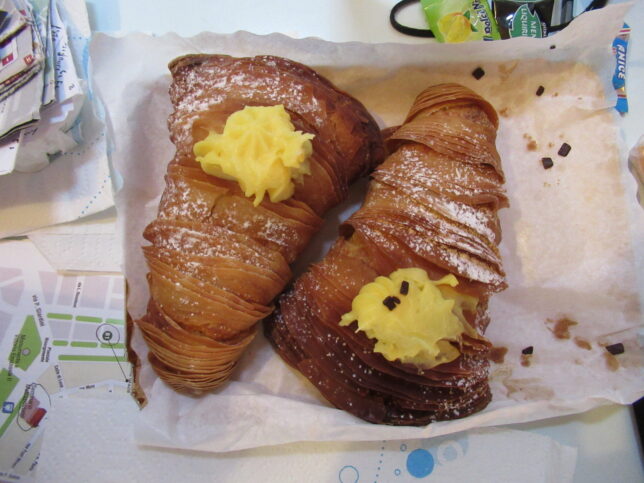
We get to have a pastry breakfast and coffee before heading to the station this morning. We are heading to Mantova, a city of about 50,000 people. It has quite a few historical buildings and monuments all thanks to the ruling Gonzaga family. They turned the city into a musical and cultural powerhouse. They constructed four artificial lakes around the city, their ingenious way of protecting their empire. The Gonzaga’s ruled Mantova from the early 14th century until the start of the 18th century and the city flourished under their rule.

We get to our apartment at Agora Residenz and are happy to discover that our room is ready even though it is only 1100. We are able to situate ourselves and map out the first few places we want to see. We head out and stop at the tourist info office where we get a nice map and buy the Mantova Card which gets us into museums and some palaces for one discounted price. As we head towards our first destination, we pass a pizza place that looks good and we stop in to get a couples of slice. They are square pizzas here that they cut to order and then heat in the oven. We get one with ham ad mushrooms and one margherita. The owner is nice and the pizza is good.

From the pizza place, we head towards Palazzo Te. Along the way we stop at the Casa dell Mantegna which is supposed to be open but it is apparently closed for some renovations. Across the Street is the Palazzo San Sebastiano. It is less of a palace and more of a temple. The upstairs part of it is ok but nothing really special. the nice lady points out that we should go outside, down the steps, through a gate and into the crypt below. It is pretty cool and we learn this is in fact a temple and honors the Martyrs of Belfiore. It does not take us long here and soon we are out the door and it is just a short walk to the Palazzo Te.

Palazzo Te was built on the Isle of Te between 1525 and 1535 on Lake Paiolo. The lake was drained during the 18th century. The palazzo was the suburban villa of the Gonzaga family and was commissioned by Federico II Gonzaga. The palace was looted in 1630 so the rooms are mostly empty. However, Giulio Romano, a pupil of Rafael was chosen as the palace artist and designer, and his beautiful frescos adorn the walls. We go into the courtyard and start our tour of the rooms. the first room is a living room and the ceiling shows the chariots of the sun and moon. The loggia of the muses was an antechamber for those who approached the state rooms from the courtyard of honor. The sala dei Cavelli has paintings of the Gonzaga horses.
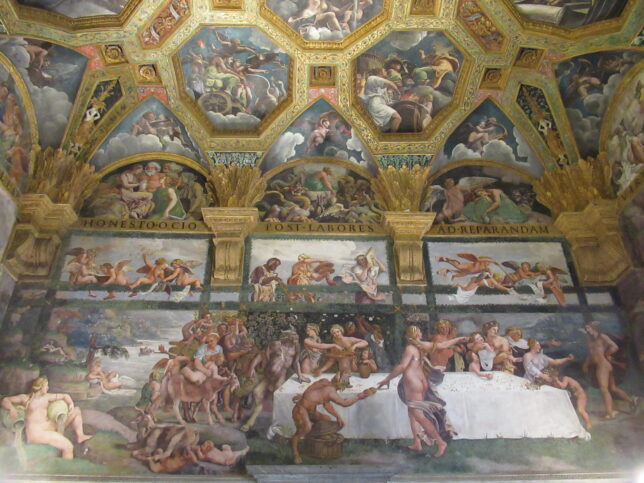
The rooms keep getting better with the Chamber of Amor and Psyche incredibly fresco full. The story involves Venus on a chariot ordering Amor to punish the young Psyche. The plot reaches its apotheosis with Jupiter uniting Amor and Psyche in matrimony. Other mythological tales of tormented love adorn the east and north walls. It is quite a stunning room and seems to be filled with quite a bit of lust. About halfway through the palace, we come to a loggia which leads out to the gardens. Since it is not raining at the moment, we walk around them for a bit. in one corner there is a garden apartment with its own small private garden. It is also sumptuously painted from floor to ceiling with more tales in the art.

Back inside the palace we come to the most famous frescoes and room in the palace. It is the Sala dei Gigante or hall of the giants. It was completed between 1532 and 1535. The story is about the giants who attempted to ascend Olympia and overthrow Zeus. You can see the power in the huge unrestrained images and the giants being defeated by the might Gods of Olympus. After visiting the frescoed rooms of the palace, there is also a museum that we visit.
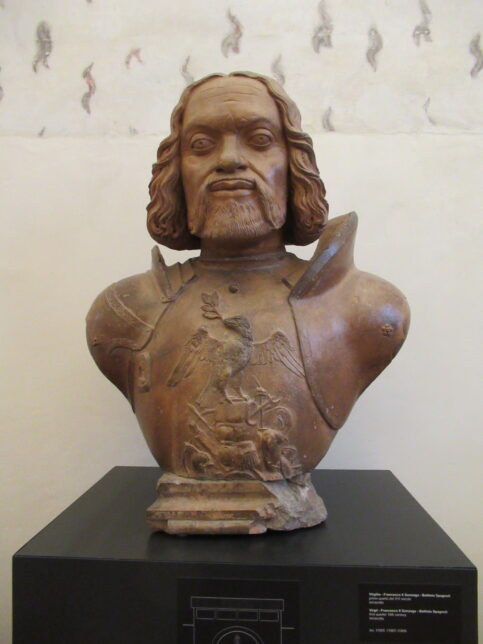
The museum starts off with some history of Francesco II Gonzaga. In 1484, he became the Marquis of Mantua. He married Isabella D’Este in 1490. He was politically unscrupulous in the profession of arms and supported by his wife’s ambition and diplomatic skills. Whether in the service of Venice, the pay of Milan, aligned with the papacy, with France, the Marquis was able to consolidate the fortunes of the Mantuan state. There is a bust of the Marquis so we can look at the man who started a dynasty here. The crucible with a bundle of golden ingots is intertwined on ceilings and other areas in the Palace. It was the emblem and symbol of the Marquis. The museum also has art and natural displays, such as taxidermies fish, that were collected over time by the family.
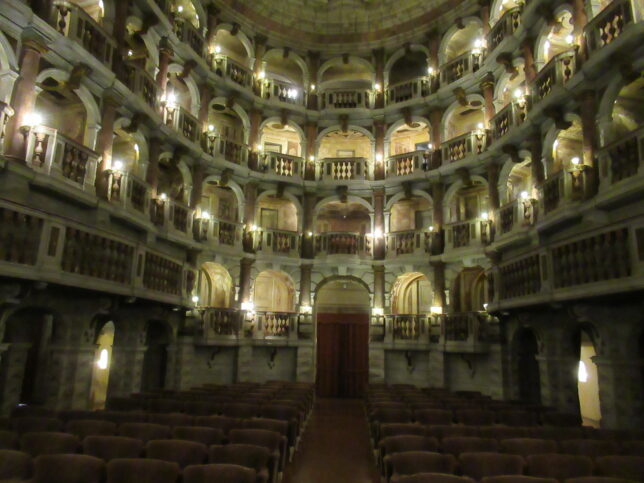
When we are done we go out and do a little bit of wandering finding a few hidden canals along the way. We make it to Teatro Bibiena. The theatre was built in 1767 entirely out of wood. The bell shape of its auditorium was not unusual in the 18 th century. What was unique was that its creator Antonio Bibiena, intended for the theatre to not just host plays and concerts but also scientific experiments. The late Baroque theater holds just 363 people and is famous as the theatre where a young 13 year old Mozart (1769) performed. It is a very beautiful theater and do to its small size does not take us long to see.
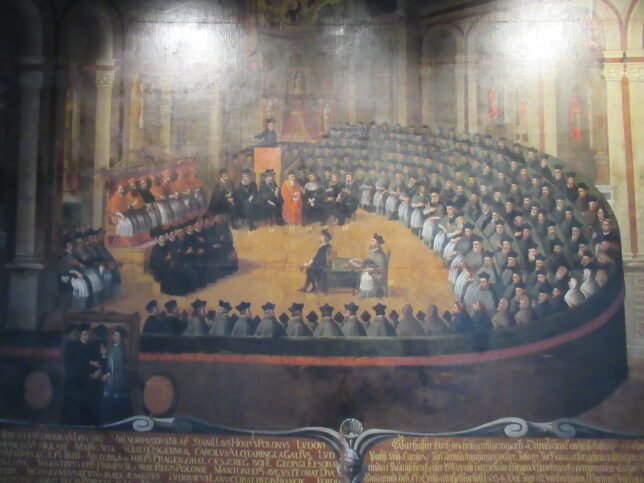
Since we have a bit of time in our day, we decide to visit the DIocesan museum today instead of tomorrow. The architecture along the way is very medieval. The walk also takes us past Palzzo Ducale and it’s very large square, which we will visit tomorrow. The museum itself displays the Gonzaga coat of arms and items from the cathedral. There is a reliquary to Saint Adriano, a jeweled gold cross, and a painting of the council of Trent with Ercole Gonzaga proudly listed first among its members. We also peak in a church on the way back to our room. It has been a busy afternoon and luckily, the rain has stayed away until now. We retreat back to our room where we have around three hours to chill and do chores until dinner. Yes we both have our chores although we do try to relax as much as we can in between them.

Dinner is at Osteria Al Gallo. We get an antipasto platter of the local salami which is very good. We order a Mantuan specialty, tortelli with zucca (pumpkin) and a meat ragu. The stuffing is made with pumpkin and local crushed almond cookies along with Parmesan and a hint of nutmeg. It is really tasty and that is coming from a non pumpkin pie eater. The other dish we try is a Lambrusco risotto made with the local Lambrusco wine. This is also very good but the pumpkin tortelli is todays meal winner.

After dinner, the rain has stopped so we do an evening passiegetta to help us digest. We explore the different piazzas surrounding us in the evenings twilight glow and window shop in the closed stores. We were going to have some gelato in a nearby place but sadly, it closed at eight o’clock. I think we will survive without it. Ariverdicci and we will see you tomorrow.
Expenses Train from Modena to Mantova 13.20E Mantova Card 40E Pizza at Da Ketty 6.50E Dinner at Osteria Al Gallo 43E Agora Residenz Apartment 96.50E Walked 10.0 Miles

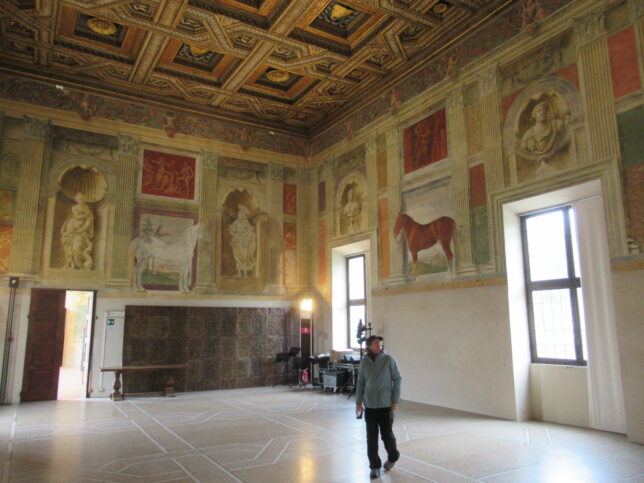
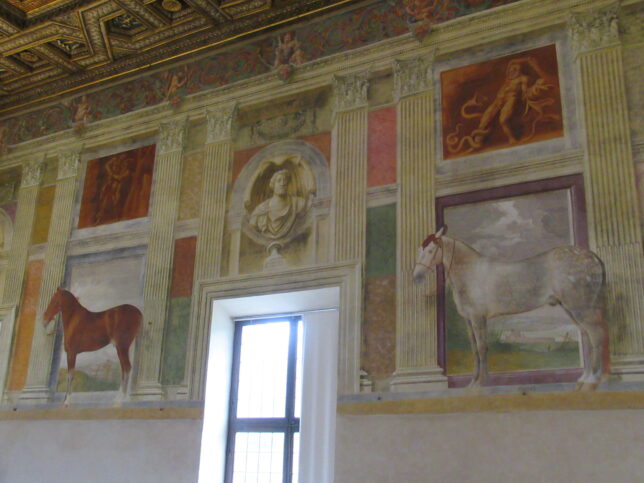
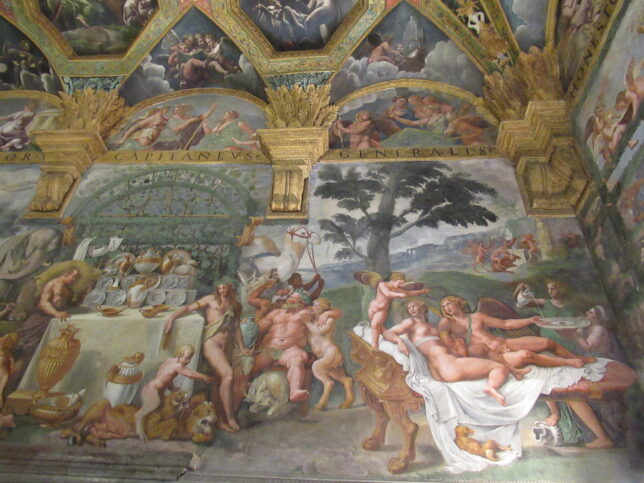
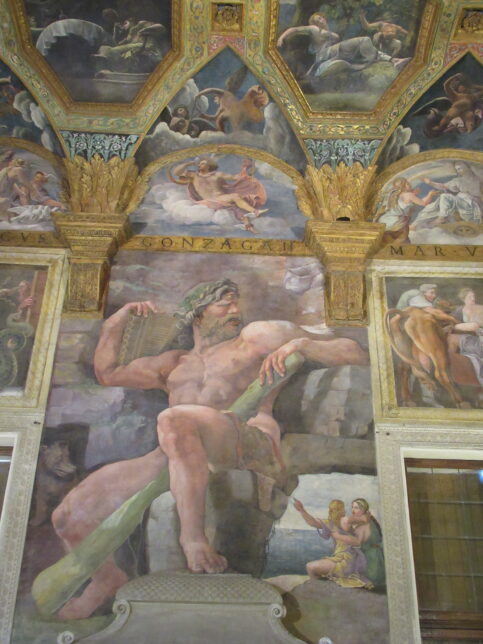

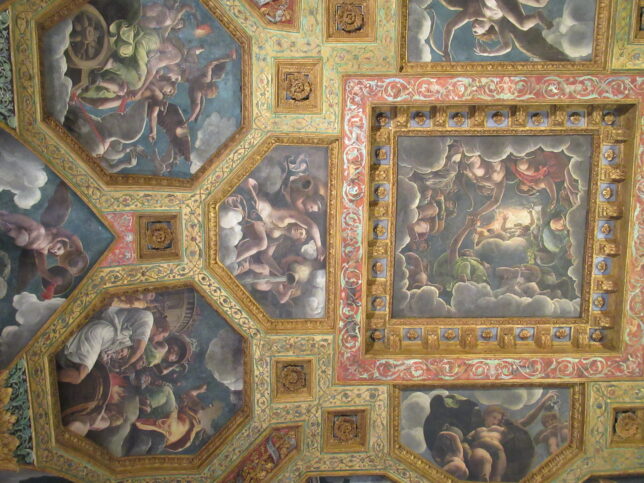
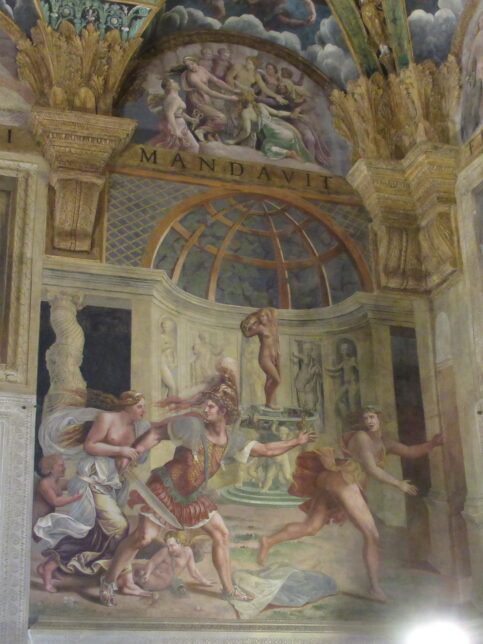
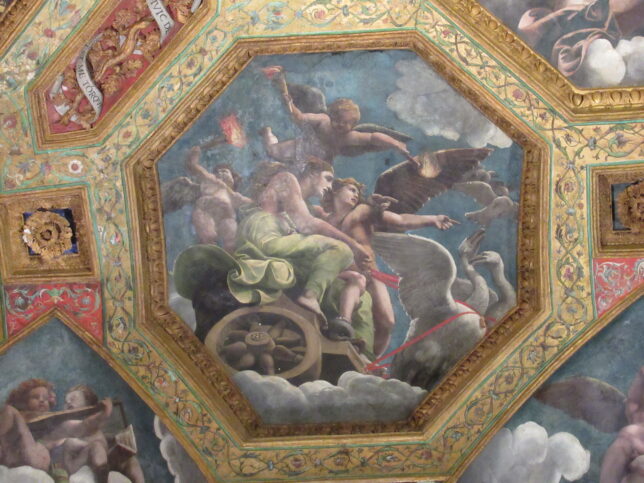
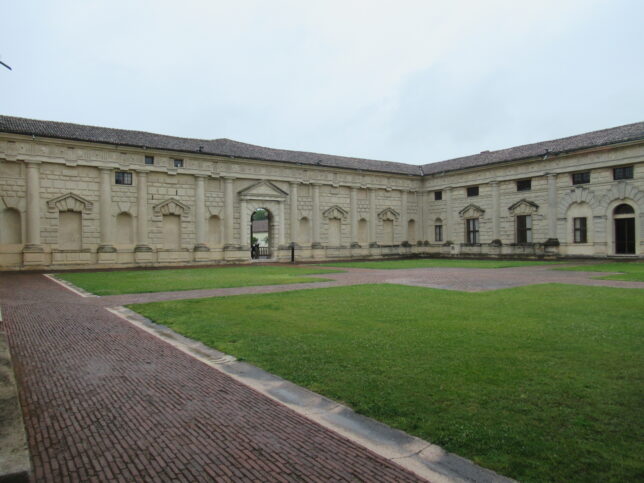


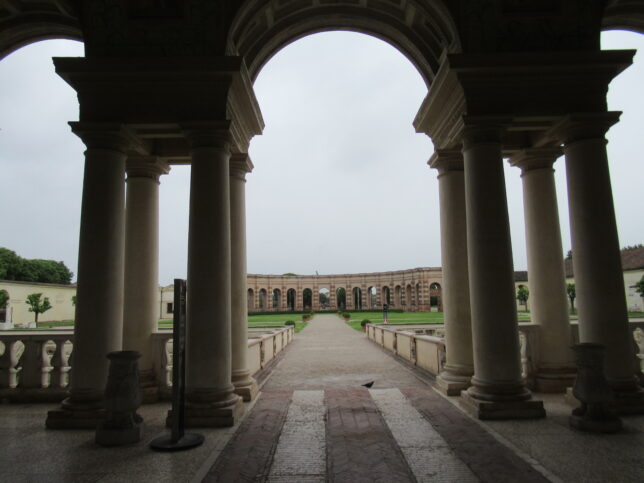


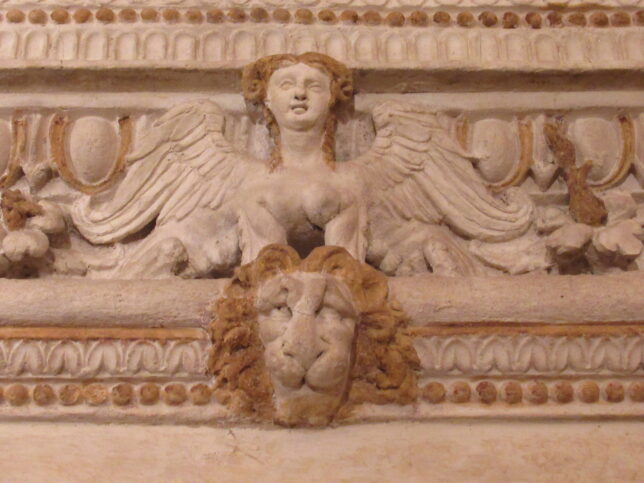
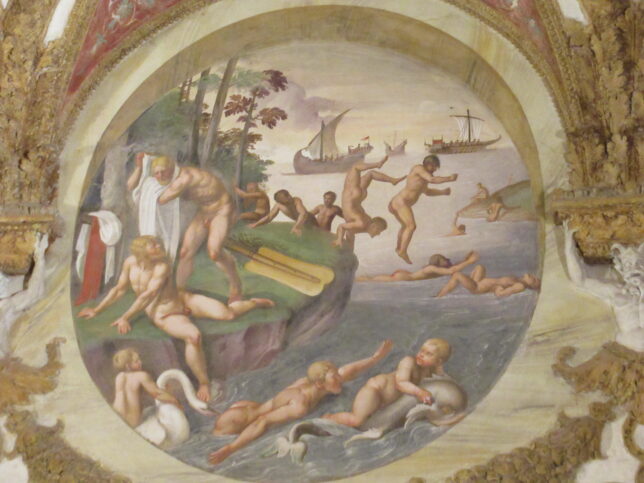
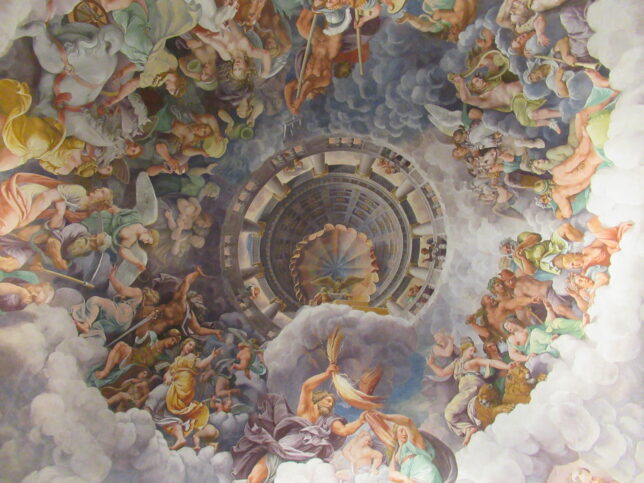
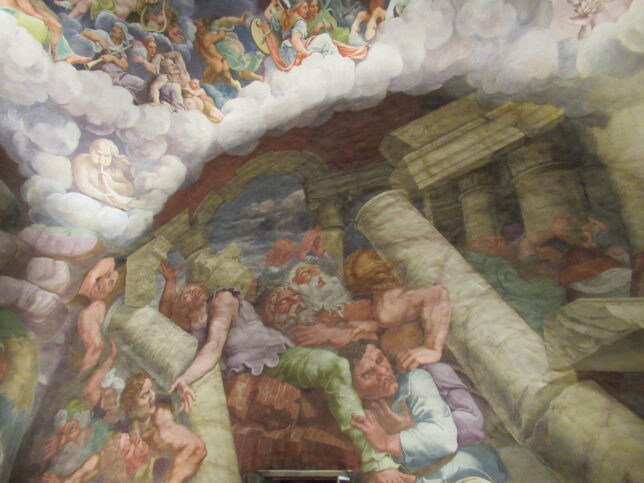
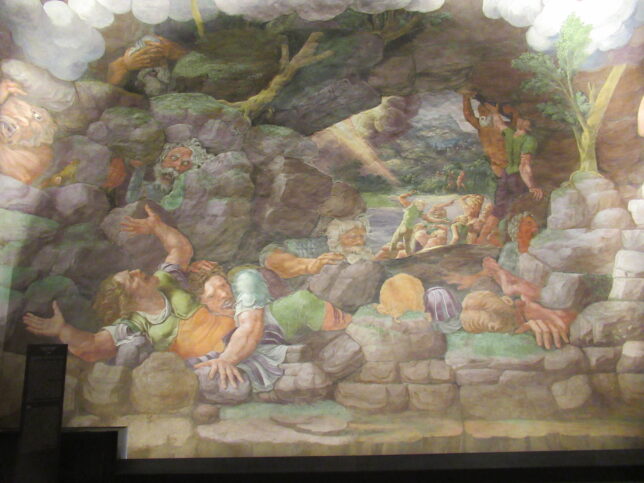


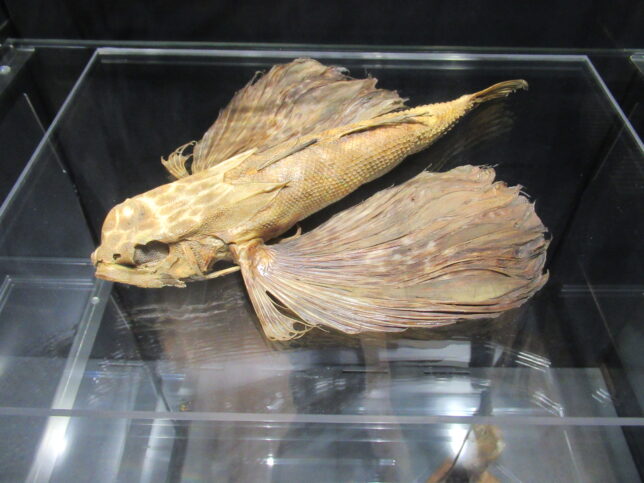
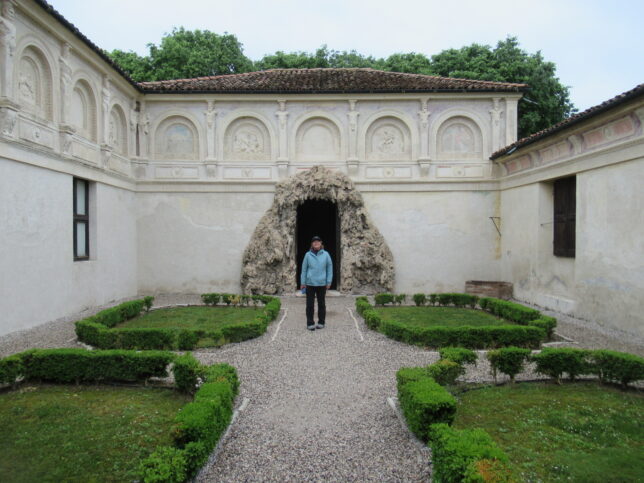

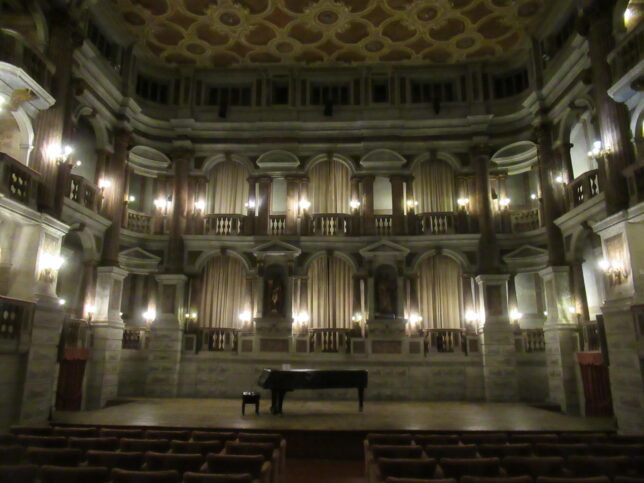
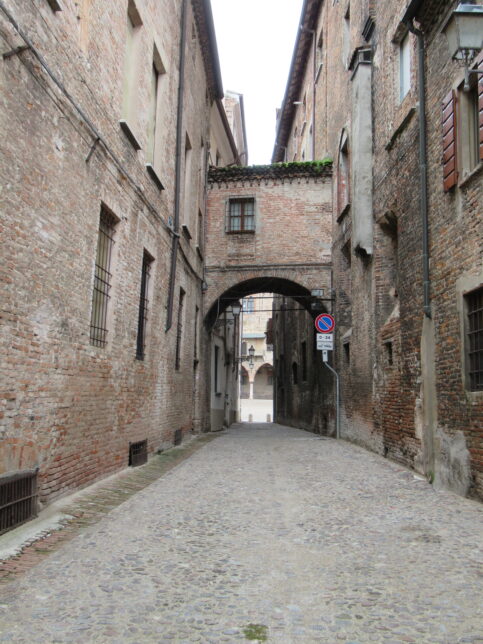
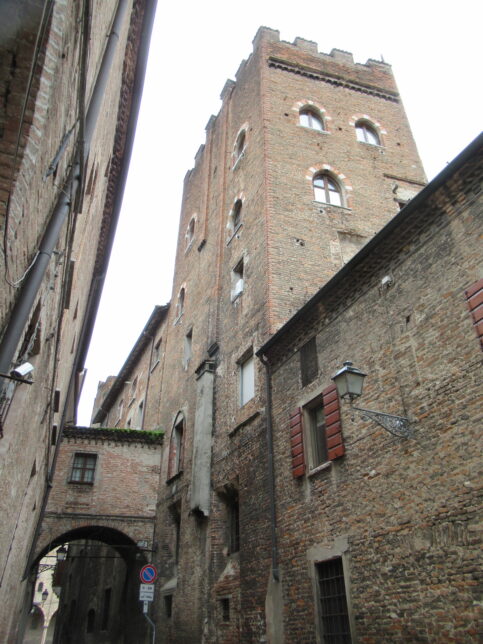

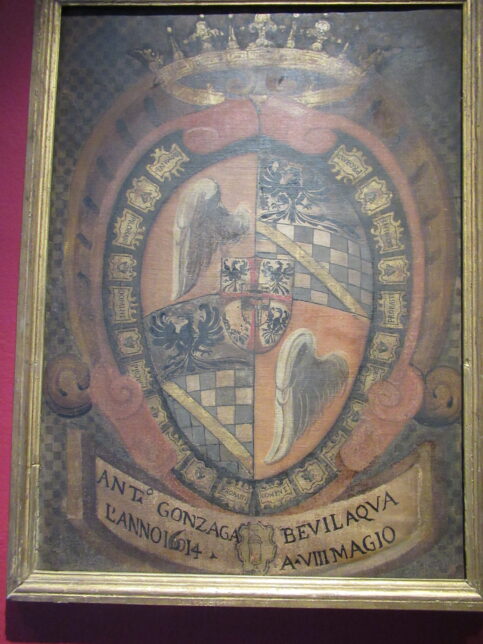
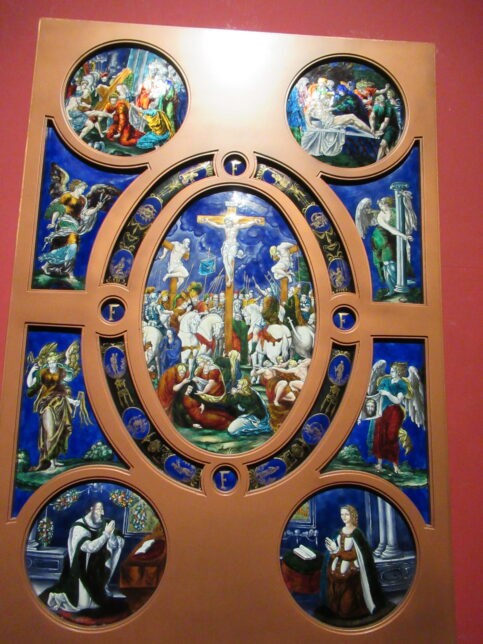



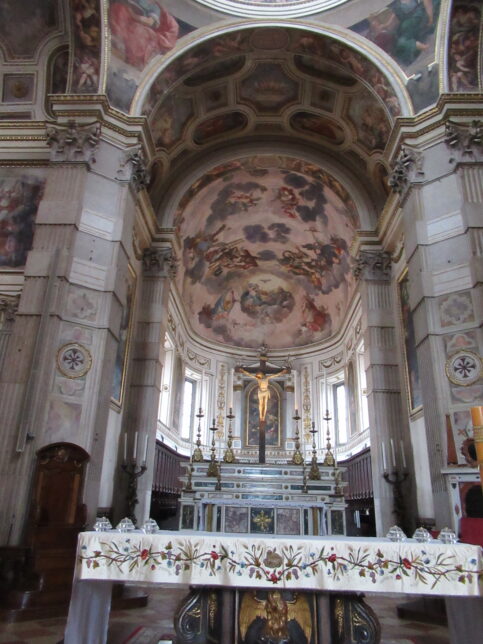

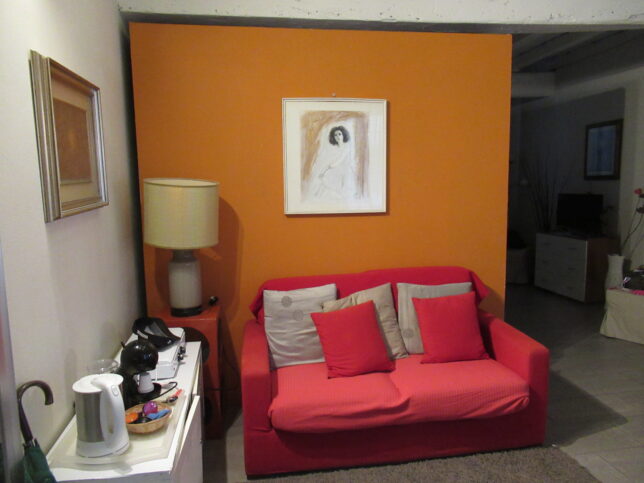


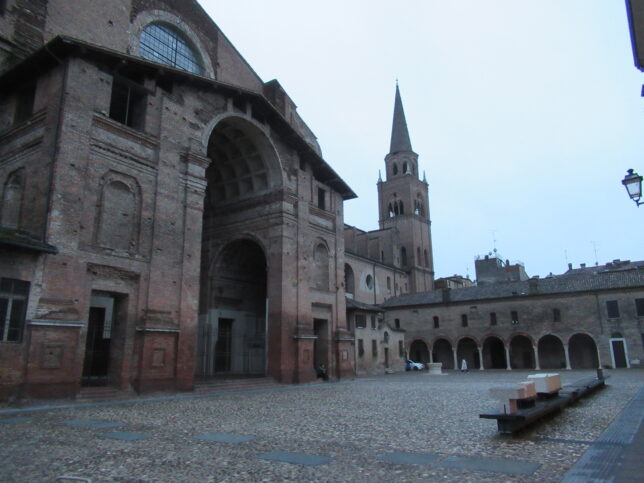
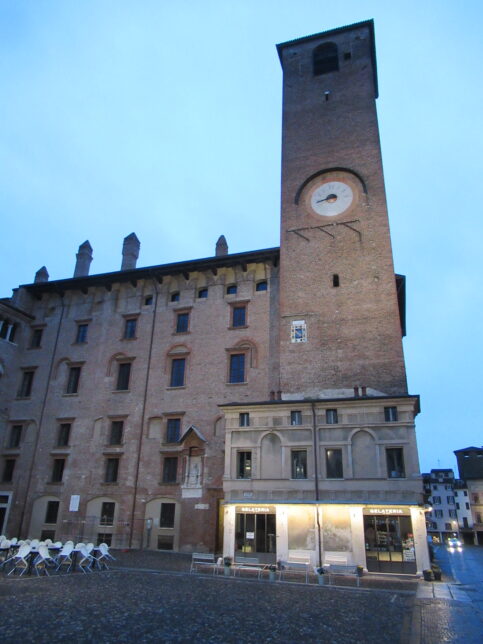
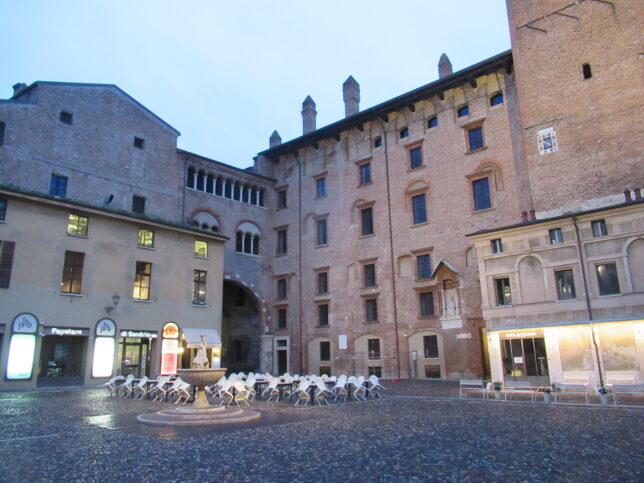

No Comments Yet